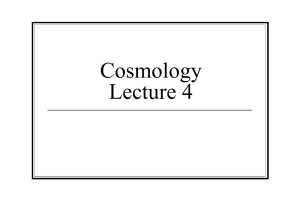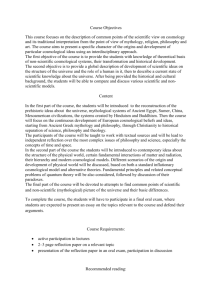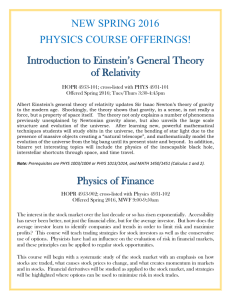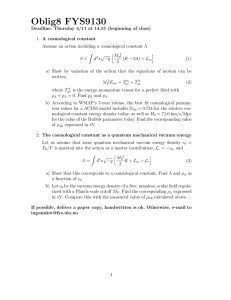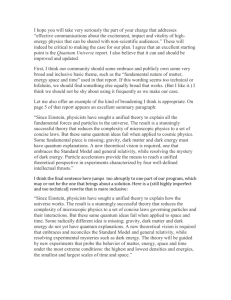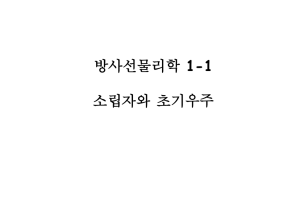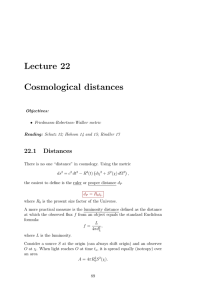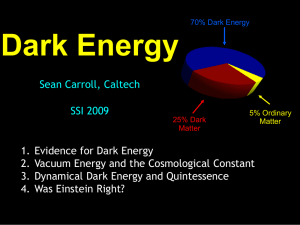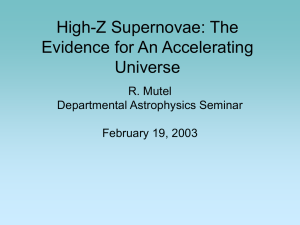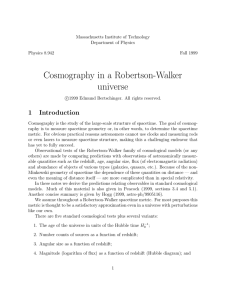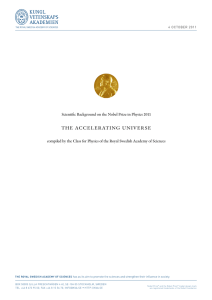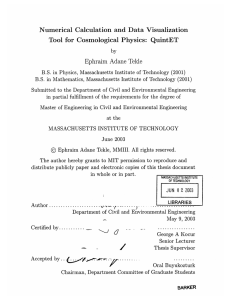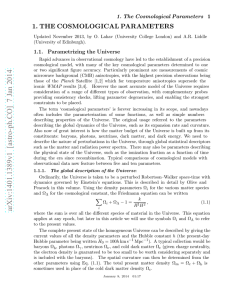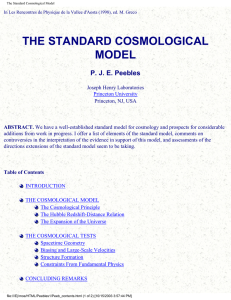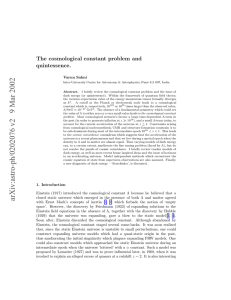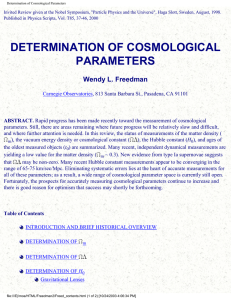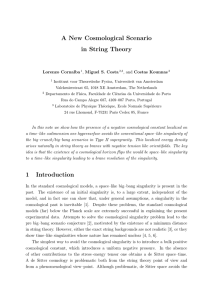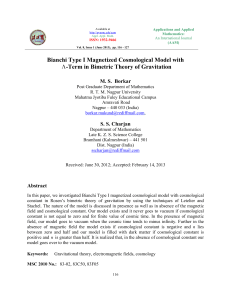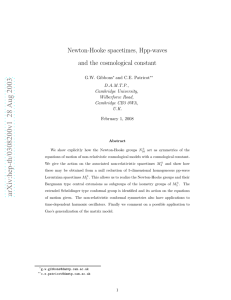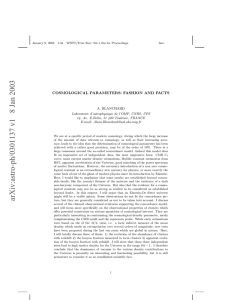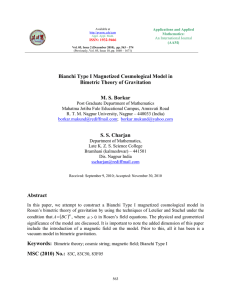MODIFIED COSMOLOGICAL EQUATIONS AND THE EINSTEIN STATIC UNIVERSE
advertisement
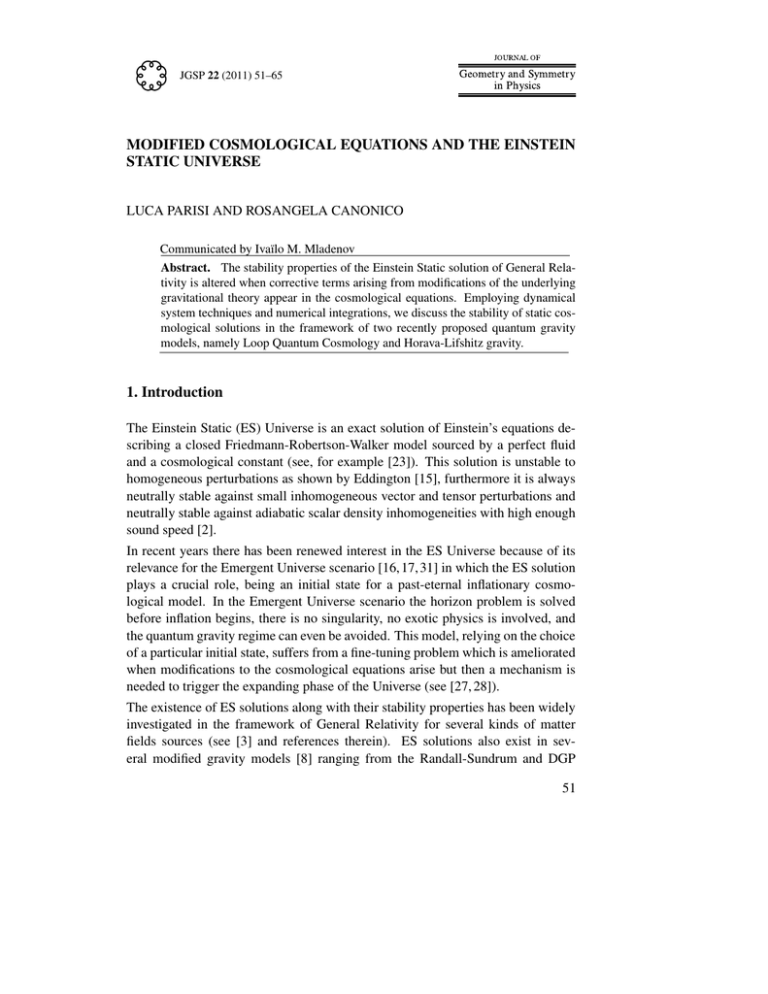
JGSP 22 (2011) 51–65 MODIFIED COSMOLOGICAL EQUATIONS AND THE EINSTEIN STATIC UNIVERSE LUCA PARISI AND ROSANGELA CANONICO Communicated by Ivaïlo M. Mladenov Abstract. The stability properties of the Einstein Static solution of General Relativity is altered when corrective terms arising from modifications of the underlying gravitational theory appear in the cosmological equations. Employing dynamical system techniques and numerical integrations, we discuss the stability of static cosmological solutions in the framework of two recently proposed quantum gravity models, namely Loop Quantum Cosmology and Horava-Lifshitz gravity. 1. Introduction The Einstein Static (ES) Universe is an exact solution of Einstein’s equations describing a closed Friedmann-Robertson-Walker model sourced by a perfect fluid and a cosmological constant (see, for example [23]). This solution is unstable to homogeneous perturbations as shown by Eddington [15], furthermore it is always neutrally stable against small inhomogeneous vector and tensor perturbations and neutrally stable against adiabatic scalar density inhomogeneities with high enough sound speed [2]. In recent years there has been renewed interest in the ES Universe because of its relevance for the Emergent Universe scenario [16, 17, 31] in which the ES solution plays a crucial role, being an initial state for a past-eternal inflationary cosmological model. In the Emergent Universe scenario the horizon problem is solved before inflation begins, there is no singularity, no exotic physics is involved, and the quantum gravity regime can even be avoided. This model, relying on the choice of a particular initial state, suffers from a fine-tuning problem which is ameliorated when modifications to the cosmological equations arise but then a mechanism is needed to trigger the expanding phase of the Universe (see [27, 28]). The existence of ES solutions along with their stability properties has been widely investigated in the framework of General Relativity for several kinds of matter fields sources (see [3] and references therein). ES solutions also exist in several modified gravity models [8] ranging from the Randall-Sundrum and DGP 51
